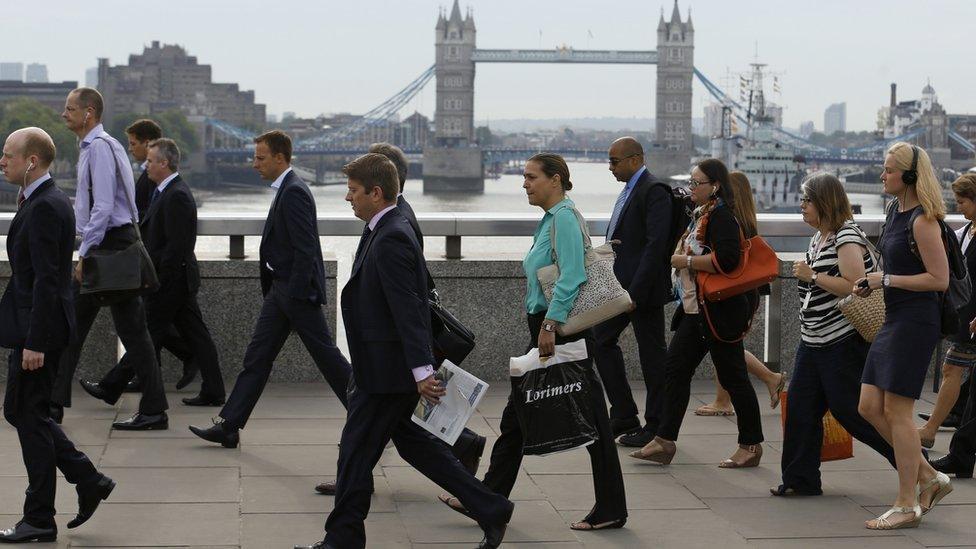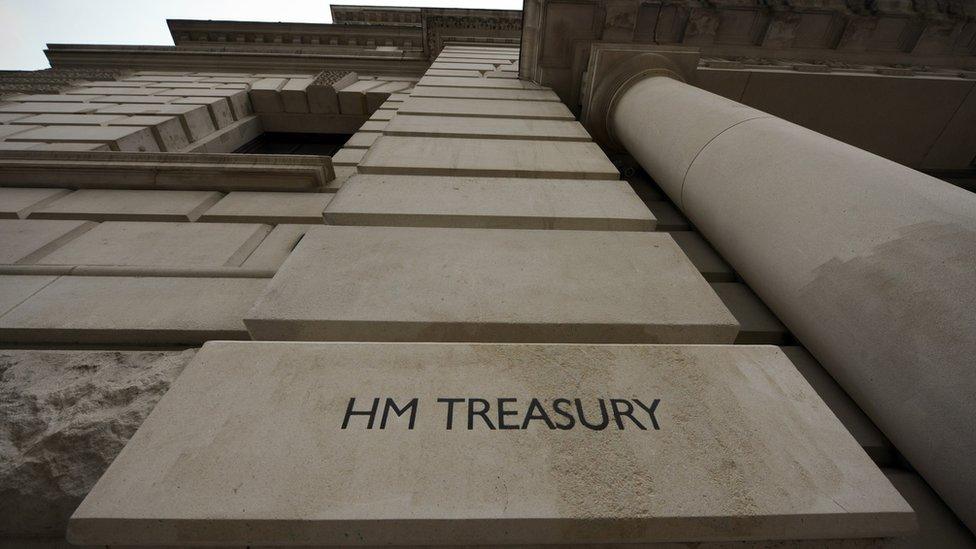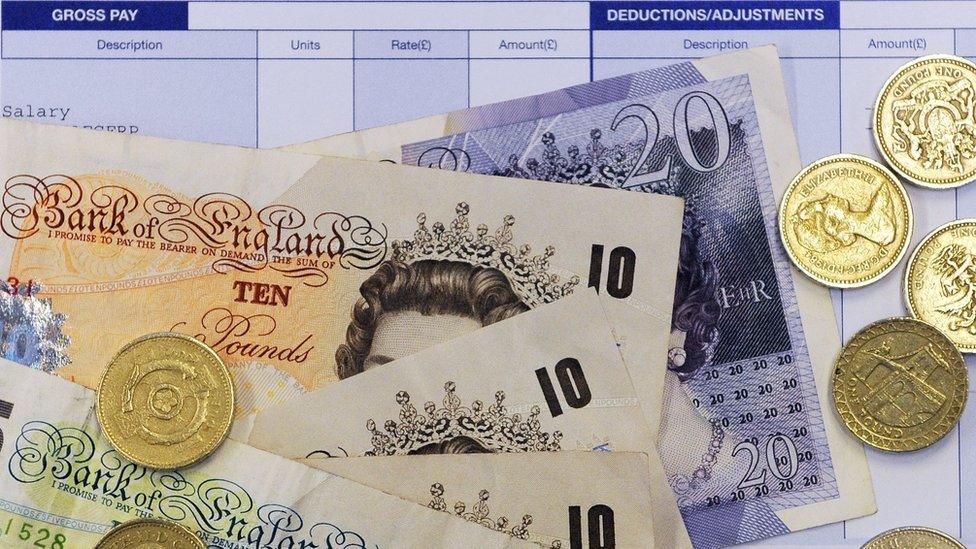What is the current state of the UK economy?
- Published
So we have new figures for economic growth in the third quarter of the year. The British economy grew by 0.5% compared with the previous three months.
In the context of a global economic outlook that has darkened a little in recent months, it's a steady kind of a figure. Slower than the 0.7% growth rate in the previous period, but not by all that much.
There were some marked differences between sectors. Service industries grew quite strongly, while manufacturing and construction slipped back. For manufacturing it was the third consecutive decline.
Over a slightly longer period, there is certainly a good story to be told about the British economy. Quite decent growth, low unemployment and low inflation.
But there is another side. Inflation is actually too low, average incomes are barely up to pre-crisis levels and there is a persistent problem of feeble improvements in productivity.
So let's look more closely at the evidence.

Growth
'My GDP diary...'
The British economy took a while to get going again after the financial crisis. But it has now grown in every quarter since the start of 2013.
Looking at annual growth rates after the worst of the financial crisis, the early stages of the recovery were sluggish. The only year in which it got above 2% was in 2014, when growth hit 3%.
In 2015 it looks like being about 2.5%, according to projections published in October by the IMF, which also described the recovery as most advanced in the United States and the UK (among the developed economies).
The British economy has just reached another major milestone this year.
In the second quarter, GDP per head was, according to the Office of National Statistics, "broadly equal to the pre-economic downturn peak" in 2008. The new figures show a further increase of 0.4% in that measure. So at long last, we are above the pre-recession level.
GDP per person gives an indication of average living standards. It's far from perfect, but a useful guide nonetheless.

Jobs

The number of people with jobs is at an all-time high of more than 31 million, external. About 74% of the population aged 16 to 24 are employed. Several European countries can beat that, including Germany, but it's higher than the figure for the United States
The other side of that equation is that unemployment in the UK is low at 5.4% of the labour workforce. That means people who want to work and have made an effort to find work. (That's why changes in employment don't necessarily translate into unemployment changes because people start or stop looking for work and so drop in or out of the labour force.)
The unemployment figures are even lower for Germany, Japan and the United States, but the British rate compares well with many other advanced economies, including France, Italy and Canada.

Inflation

Inflation is very low, in fact negative, according to the most recent figures. There are several different price indices but the main one, used for the Bank of England's inflation target, is the Consumer Prices Index (CPI). In the year to September it fell by 0.1%. The target is a 2% annual increase.
Sometimes falling prices or deflation can be a serious issue. It can aggravate debt problems, and lead to consumers delaying spending.
But most economists think that Britain is not experiencing bad deflation now (though the eurozone, which also saw prices fall in September, is closer to that). Incomes are rising so the debt problem is not so acute. Falling prices are having the beneficial effect of boosting consumer spending power.
Still it is pretty clear that the Bank of England would rather have inflation higher and closer to its target.

Government finances

The financial crisis and the recession led to a sharp increase in government borrowing. The annual deficit (net public sector borrowing) peaked at more than £150bn, or 10% of national income or GDP in the 2009 financial year.
It has come down, to £90bn (4.9% of GDP) in the financial year to last April.
But, as there still is a deficit, total accumulated debt continues to rise and it is now about £1.5 trillion. The debt burden as a percentage of GDP may now have peaked, according to projections from the Office for Budget Responsibility (OBR). Although the amount of debt is still rising the economy is now growing faster so the debt burden should start to fall if those OBR figures turn out to be correct.

Productivity

This is the amount produced per worker. Over the long run higher productivity is the basis for higher living standards, although in short periods, countries can become better off from longer working hours or getting more people into employment.
The long-term trend is for productivity to rise. But it is still slightly below, external the level it reached at the onset of the recession in early 2008.
A decline in productivity during a recession is common. Firms cut back on output but they are often reluctant to cut their workforce as much. In those circumstances, the maths means productivity falls.
But the persistence of the weakness in productivity has been unusual in this recession and the aftermath. Other developed countries have also had disappointing productivity, but the UK's has been weaker than most. In terms of the level of output per worker it's the lowest among the G7 leading developed economies apart from Japan, and in 2013 was 40% below that of the US, external.
This situation has been called the "productivity puzzle", external.
The traditional explanation of firms keeping on workers is probably significant, especially in the early stages of the recession and recovery. The impact of the financial crisis on banks' ability and willingness to lend to business, external is another factor that has been suggested. There are others, but the puzzle has not been fully solved.

Incomes

The broad picture is, unsurprisingly, that household incomes took a battering from the financial crisis and the recession, but have started to recover.
The Institute for Fiscal Studies (IFS) looked at data up to the financial year 2013-14, external and found that compared with the onset of the recession, pensioner average incomes were up 7%. For others, they remained 2.7% lower.
The stronger performance of pensioner incomes partly reflects the so-called triple lock, which ensures the basic state pension rises by at least 2.5%. It is also due to their incomes being less dependent on the labour market which has been hit by the recession and where pay has recovered only moderately.
The IFS analysis shows fluctuations in income inequality in the last few years, but whatever the recent moves, they have not to any great extent reversed the rise in inequality seen since the 1970s.